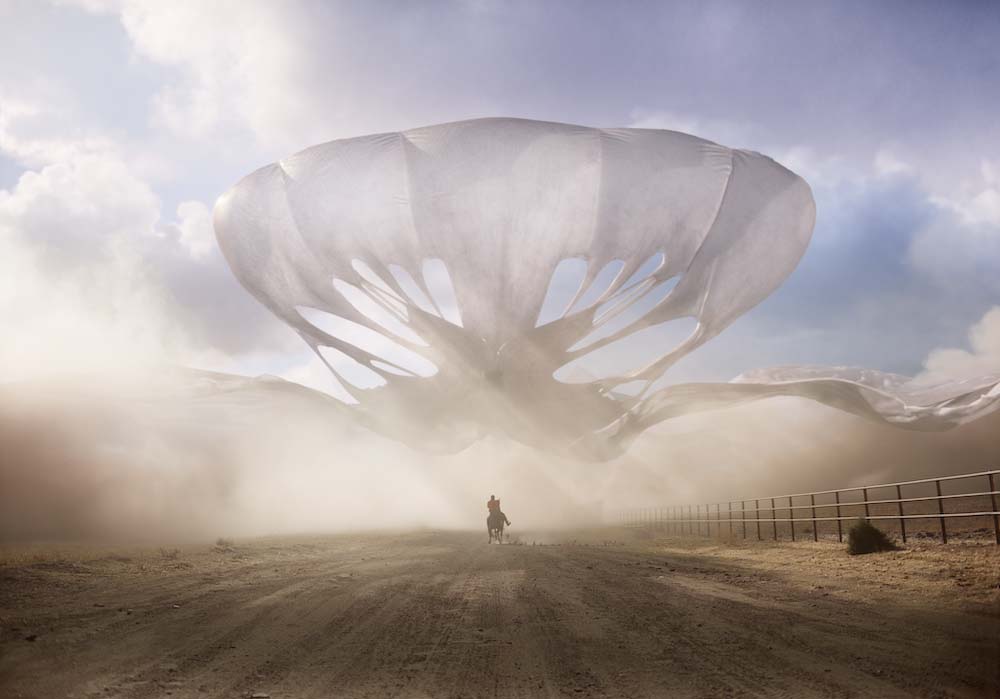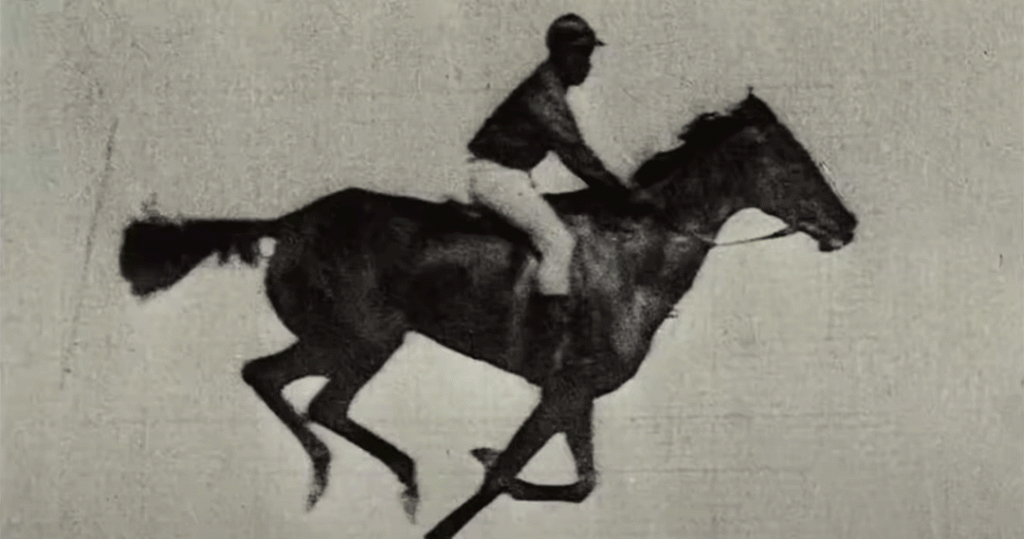Jordan Peele’s latest film nope follows siblings OJ and Emerald Haywood in the aftermath of their father’s unexpected death. The siblings ‘We ain’t got no more problems’ is the foreboding line said by Otis Haywood moments before his untimely death and the supernatural haunting begins on the Haywood family ranch. Jordan Peele’s latest film Nope follows siblings OJ and Emerald Haywood in the aftermath of their father’s unexpected death. The siblings face difficulties as they try to maintain the family horse ranch and business Haywood’s Hollywood Horses. To keep financially afloat OJ sells some of his horses to the Haywood’s closest neighbour Ricky Park, aka Jupe who owns a western themed tourist attraction ranch. It is revealed that Jupe is the child star of a sitcom called Gordy’s home about a family who have a chimpanzee, as a child he is witnesses to a traumatic scene after the chimp playing Gordy snaps and brutally attacks the cast. The Haywood’s start to notice strange happenings at their ranch, electricity cuts, horses acting strangely and then going missing, they realise they are being visited by an extra terrestrial presence. What they initially believe to be a UFO turns out to be the alien organism itself, it eats humans and animals indiscriminately. It turns into a cat and mouse chase between the alien (who they name Jean Jacket) as the Haywood’s try to get digital proof of the alien form without perishing in the process. The story of Gordy’s home ties into this narrative through the foreshadowing of trying to tame something untameable.
Peele’s genre defying Nope can be characterised within tropes of many different film genres: it can be considered as a Si-fi western due to the focus on extra-terrestrial life and UFO’S, as the main plot of the film becomes the Haywood’s trying to get evidence of Jean Jacket’s existence. As well as the inclusion of typical western tropes, the barren setting of the Agua Dulce desert, ranches, and horses. Nope can also be characterised within horror genre, through the grotesque and violent Gordy’s Home scene, jump scares, the alien bathing the ranch in blood and an unsettling musical score. It also includes tones of a psychological thriller as the sinister mystery unfolds, leaving the viewer in a state of anxious anticipation. Additionally, there are comical tones to the film. Nope isn’t defined by any singular one of these genre’s but a combination of them all.
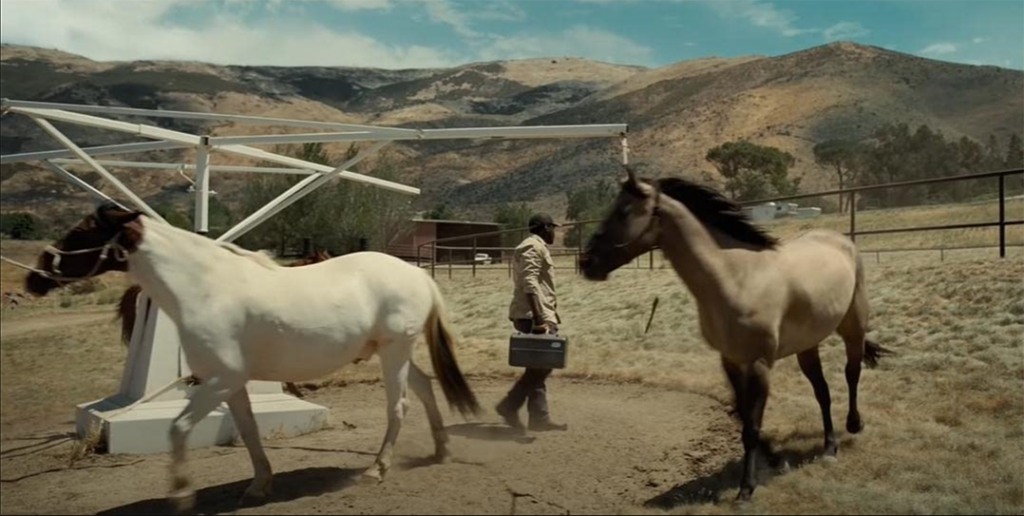

Within Peele’s Nope a prominent theme is of the attempted domestication of wildness, this is explored through Gordy and Jean Jacket. The human desire want to tame something untameable and have mastery over other beings for financial profit. This is shown through the Gordy’s Home attack scene, Gordy’s Home is a 1996 sit-com and within the filming a birthday episode Jupe is the only cast member who remains physically unharmed during this grisly attack after one of the chimps playing Gordy snaps, it is a traumatising scene for the child Jupe to witness. The attack scene frames the whole of Nope despite it not being the main story line of the plot, there are two flashbacks to the scene throughout the narrative before the scene plays out in its entirety, emphasising the significance of the scene. One of these flashbacks is the opening scene to Nope, a black screen with the text ‘I will cast abominable filth at you. Make you vile. Make you a spectacle’ Nahum 3.6 over it, this biblical quote hints and the horrifying spectacles to come. As the sounds of the attack become audible to the viewer this heightens the suspense as the viewer is only able imagine the brutality of the attack but not able to physically see it as a voice cries ‘don’t, don’t, oh my god’. The black frame cuts to a wide pan shot of the family home style film set, the mise- en-scene of the scene juxtaposes the bright set with obvious signs of violence, there is blood smeared on the wall, lampshades and other debris broken on the floor and birthday wrapping paper torn up.
The stillness of the scene is broken as Gordy appears, he is dressed in human clothes with a yellow jumper, denim jeans and a birthday hat on, however there is blood covering his mouth, hands and staining his clothing. The appearance of Gordy paradoxically combines comedy and horror, the surreal image of the chimp dressed up in human clothes would normally be humorous but the blood-stained chimp sitting in the middle of this of violent destruction is anything but comical. Peele presents the misguided concept of trying to tame something wild just for human financial gain, just because Gordy has been dressed up in human clothes and put in a film set doesn’t make him any less of a wild animal or any more like a human. Gordy is most likely a nod to the real-life case of Travis The Chimp who was kept as a pet and animal film star, until one day in 2009 when he brutally attacked and disfigured Charla Nash, Travis was later shot by the police and killed. Travis’s owner, Sandra Herold reportedly cared for him as her own child and the violent attack seemed to come out of nowhere – this is a stark reminder of the unpredictability of wild animals.
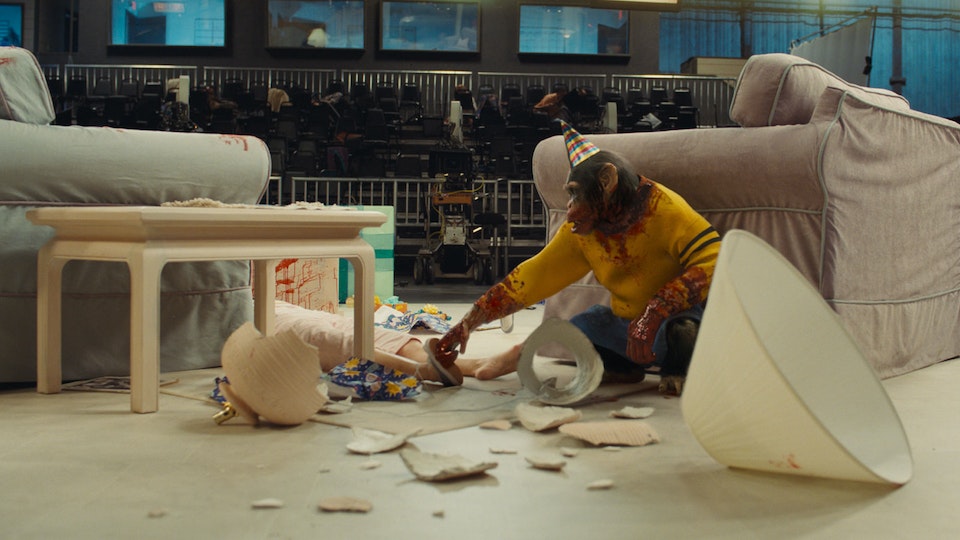

Gordy nudges the unresponsive woman looking for a reaction from her, he is clearly confused of the repercussions of his attack, that she is dead because of him. When the Gordy’s home scene is revisited to play out in its entirety later on in the film the tropes of comedy and horror are once again merged as the family in the sitcom discuss the presents, they have they have got for Gordy’s birthday, with canned laughter sprinkled in the audio. The Chimpanzees’ trigger is the sound of a balloon popping, the screen goes black and the sounds of crashing, the chimp screaming, and the cast shouting are the viewers only clue to how the initial attack unfolds. Peele deliberately blinds the viewer to majority of the attack to heighten the suspense and horror, the viewer is mainly allowed to view the bloody aftermath of the attack and so can only imagine the horror of what wasn’t made visible to them.
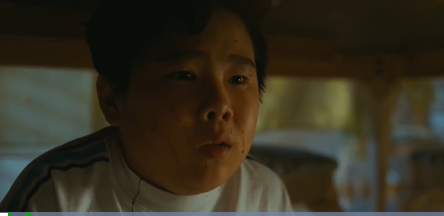
Phyllis is twitching and whimpering until Gordy attacks her again and she falls silent, Gordy seems monstrous as Phyllis is twitching and whimpering until Gordy attacks her again and she falls silent, Gordy seems monstrous as he viciously kills this already defenceless and injured woman. He rips the birthday hat of his head in a distinctly human gesture and then stares directly at into the camera seeing Jupe hiding under the table and crawls towards him, the tension builds as the bloodstained chimp moves slowly towards Jupe as his reaction to the defenceless child is unknown. Gordy reaches his bloodstained hand out towards a terrified Jupe for a fist bump, a moment of connection between the chimpanzee and the boy, As Jupe reaches to meet Gordy’s gesture just as their hands meet Gordy is shot, the frame cuts to a close up of Jupe’s blood-spattered traumatised face.

The chimpanzee playing Gordy was exploited for the benefit of humans who made money of his presence in the sitcom. Humans tried to tame and monopolise him, they removed his autonomy and he was dressed up in human clothes and made to perform within an artificial stressful setting and was then shot when he acted upon his instincts: meeting the same fate as Travis the chimp. As Peele himself explains the Gordy scene It’s about exploitation”, “It’s about feelings of rage. At the industry.”
”It’s about exploitation … It’s about feelings of rage. At the industry ”
– Peele
This grotesque scene seems disjointed and at odds with the rest of this SI-FI horror; however this scene mirrors that of the Jupiter’s Claim Star Lasso experience scene in which a now adult Jupe attempts to lure the Alien for a tourist spectacle. Jupe clearly hasn’t learned the lesson on the dangers of attempting to tame and domesticate something wild, from his harrowing experience watching the Gordy’s home attack. In fact, Jupe’s seems think of himself as special and chosen after being the only one left physically unharmed in the aftermath of the attack stating about the alien ‘I believe they trust me, If they didn’t I don’t think any of us would be here’. Jupe couldn’t be more misguided about the alien’s nature and this line foreshadows the death of him and everyone else gathered around him. A shot from the alien’s point of view surveying the crowd from the clouds making and a metallic growling sound presents the imminent danger the humans are in. As Jupe looks upwards to the sky a look of horrified realisation crosses his face as he becomes aware of the deadly being he has messed with and this time he doesn’t a second chance. The screams of the crowd become audible as the crowd are sucked into the alien’s digestive tract and are slowly digested alive.
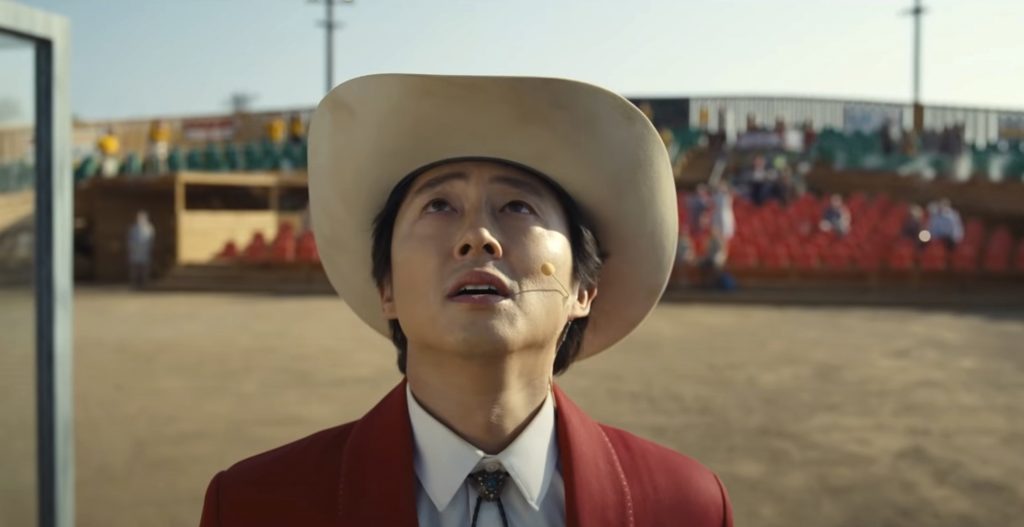
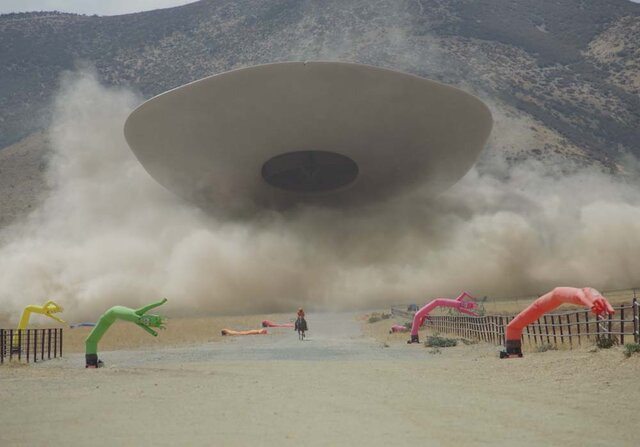
The relationship of predator and prey is also explored within Nope through both Gordy and Jean Jacket. Humans become prey within the gaze of the Jean jacket as it eats humans and horses indiscriminately, subverting the concept of human exceptionalism – the idea that humans are superior to all other beings due to evolutionary advances and civilization. Humans and livestock are equalised through Jean Jacket seeing them both merely as food sources. Jean Jacket has characteristics of an apex predator: it is extremely fast; deadly; stalks its prey; is territorial; vicious and makes guttural growling sounds. Human’s also become prey to Gordy within the attack scene as he brutally kills Phyllis and attacks and disfigures Mary Jo Elliot and Tom. OJ and Emerald’s father words in a flashback take on an ominous meaning in the face of Jean Jacket and Gordy ‘I guess some animals aren’t fit to be trained’.
”I guess some animals aren’t fit to be trained”
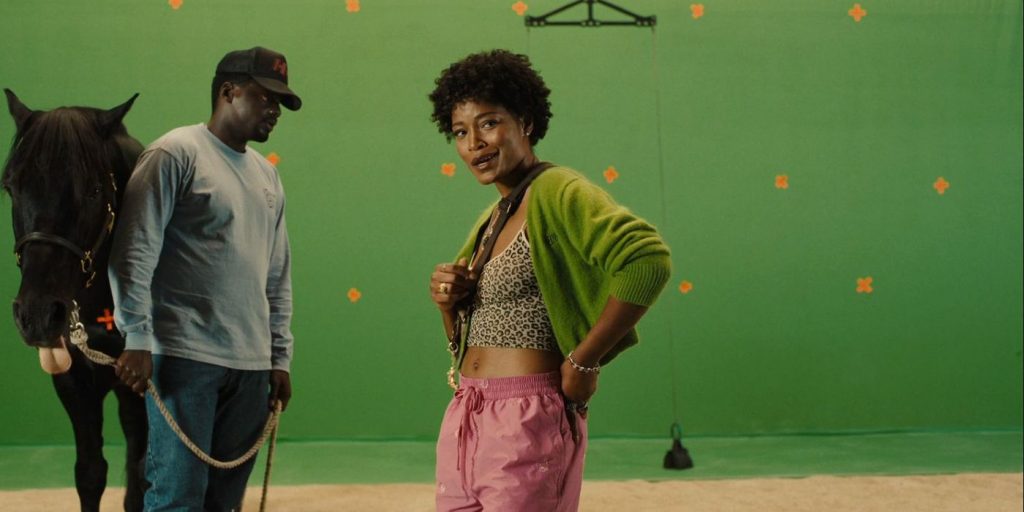
Throughout the film OJ is shown to have a very special connection to horses, he cares deeply for them and see’s them as individual beings with names rather than a collective. The horses become a vehicle for the plot and have a significant role within the film, not only is it the family business but their father sustains his fatal injury on horseback, JeanWhen OJ is on set for the Haywood Hollywood Horses business he acts is uncomfortable and withdrawn around the other humans but completely at ease with the horse Lucky. OJ looks out for Lucky’s best interests and tries to voice the horses needs but is ignored by the others on set. When he is asked to give a safety talk OJ physically withdraws and leans into the horse, clearly gaining comfort from its presence. He talks to the horses as if they are human, saying to Lucky when he leaves ‘Lucky, hang tight I’ll be back’ and he keeps to this word and goes to save Lucky form Jean Jacket despite the risk to his own safety whereas Jupe was prepared to feed horses to Jean Jacket. The horses also seem to have a special bond to OJ, in a terrifying scene as OJ flees from the pursuing alien on Lucky’s back it shows the horses trust for him. Lucky appears once more by OJ side after he has accepted his fate of being killed by the alien, despite the terrifying environment the horse doesn’t run away. The relationship between OJ and horses especially Lucky differs from all other human animal relationships within the film as it isn’t an exploitative or cruel one, but one of understanding and companionship.

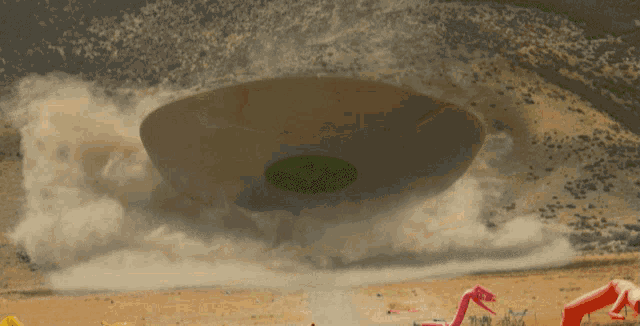
Overall, Jordan Peele’s newest film Nope explores the exploitative human practice of attempting to domesticate wild animals. Gordy is placed in the unnatural and stressful setting of the film set, solely for the financial benefit of the humans around him, his death was a preventable one if he had never been put in that situation to begin with furthermore it is referencing a real-life case. Jupe never learns from this experience and attempts gain power and money by taming Jean Jacket and ends up meeting the fate he avoided as a child, being killed by something wild that he mistook as tameable. The dynamic of predator and prey is presented through Nope with humans inhabiting the role of prey both to the alien and Gordy, subverting the concept if human exceptionalism. OJ’s bond with horses is the only overwhelming positive human animal relationship within the film.
Bibliography
Peele, Jordan dir., ‘Nope’, (Universal Pictures, 2022)
Butcher, Sophie, ‘Jordan Peele On Nope’s Gordy Sequence: ‘It’s About Feelings Of Rage’ – Exclusive’, Empire, 2022 <https://www.empireonline.com/movies/news/jordan-peele-nope-gordy-explained-feelings-of-rage-exclusive/>
Zigler, Brianna, ‘Gordy did nothing wrong’, Paste Magazine , 2022 <https://www.pastemagazine.com/movies/nope-gordy-chimp-explained/>
OConnor , Jessica ‘Inside Travis The Chimp’s Gruesome Attack That Left A Woman Without A Face’, all that’s interesting, 2022 <https://allthatsinteresting.com/travis-the-chimp>
Further Reading
Murphy , Kim . J , ‘Nope’ Director Jordan Peele Shares a Deeper Look at ‘Gordy’s Home!’ With Chimp Sitcom’s Opening Credits’ <https://variety.com/2022/film/news/nope-chimp-gordys-home-credits-jordan-peele-1235324235/>
Coulter , Kendra ‘Jordan Peele’s ‘Nope’ shines spotlight on animal work in entertainment’, The Conversation <https://theconversation.com/jordan-peeles-nope-shines-spotlight-on-animal-work-in-entertainment-187910>
